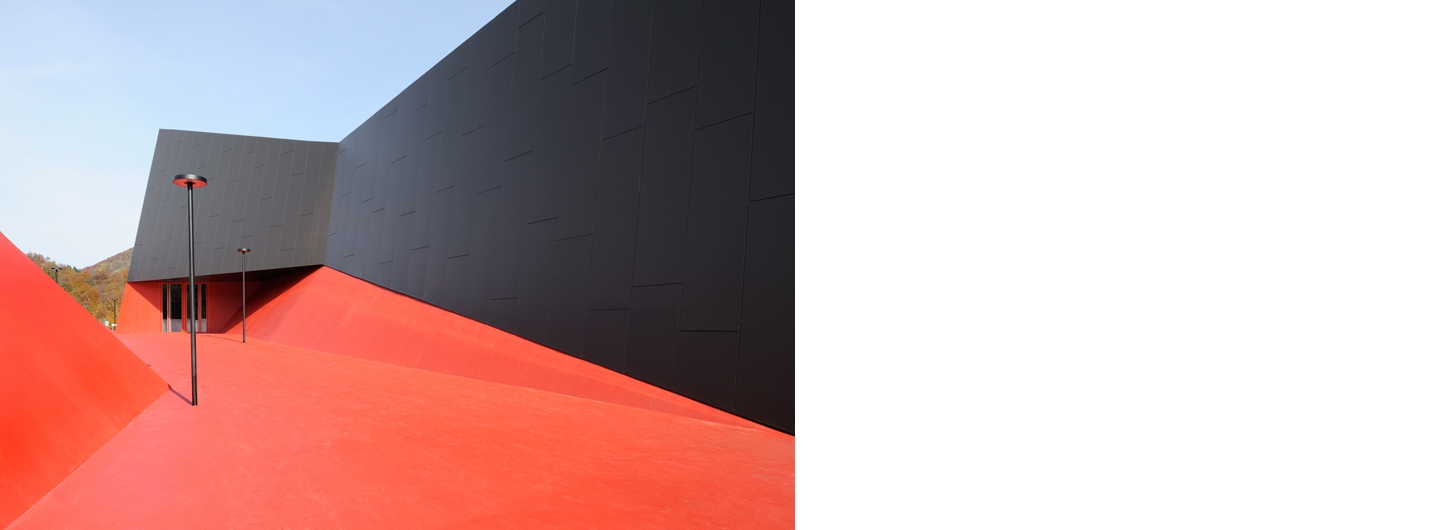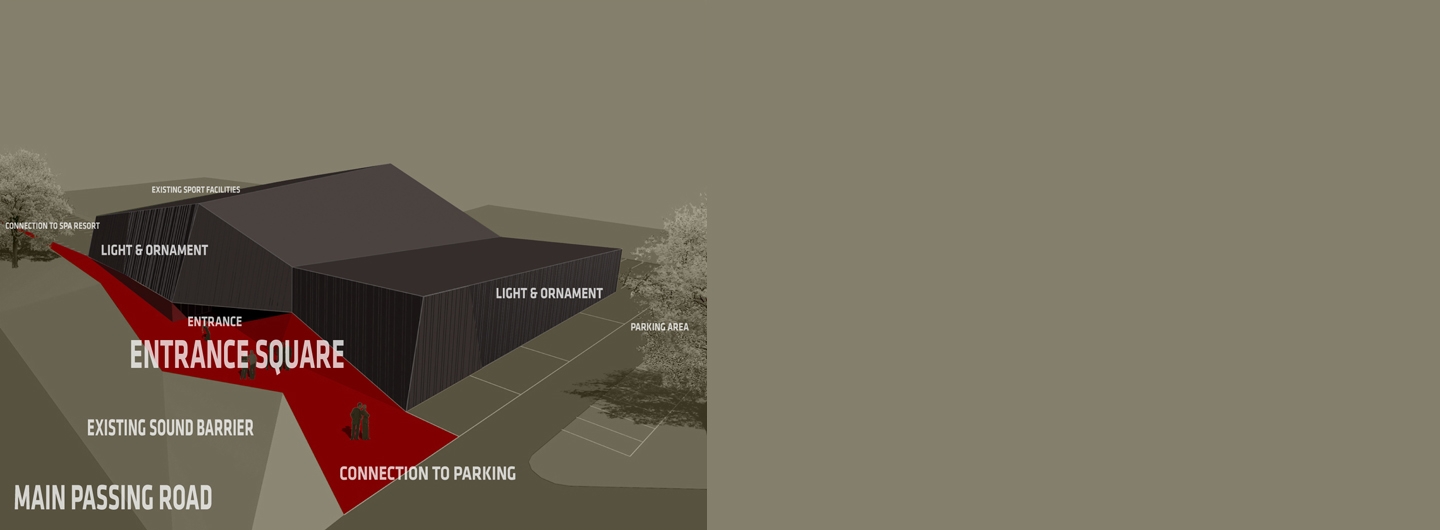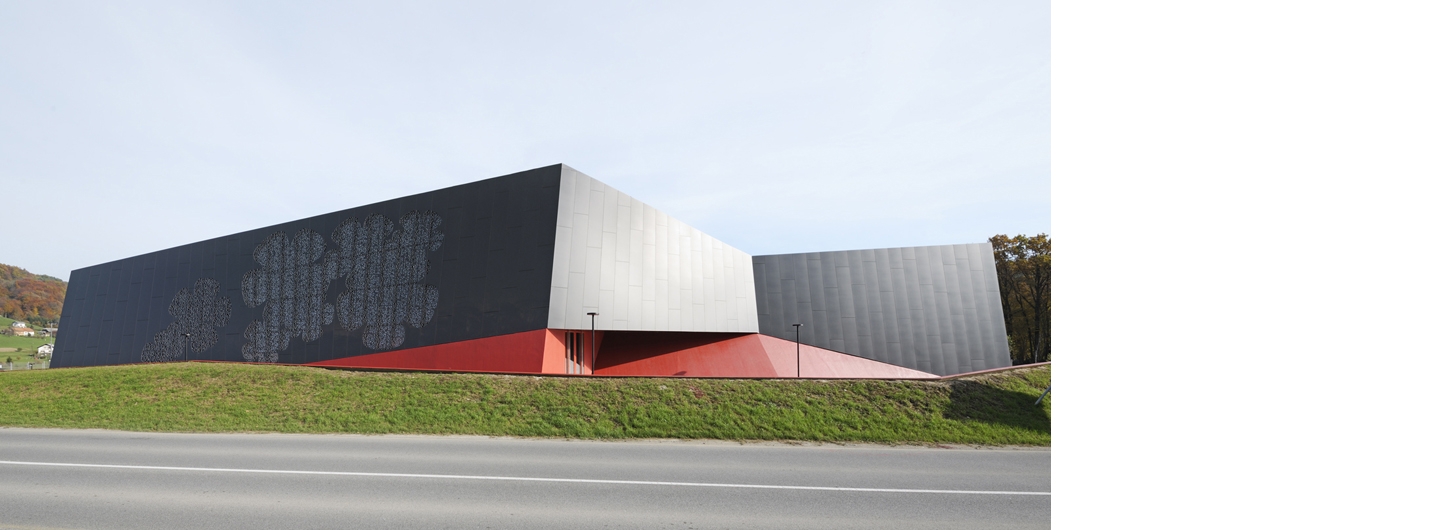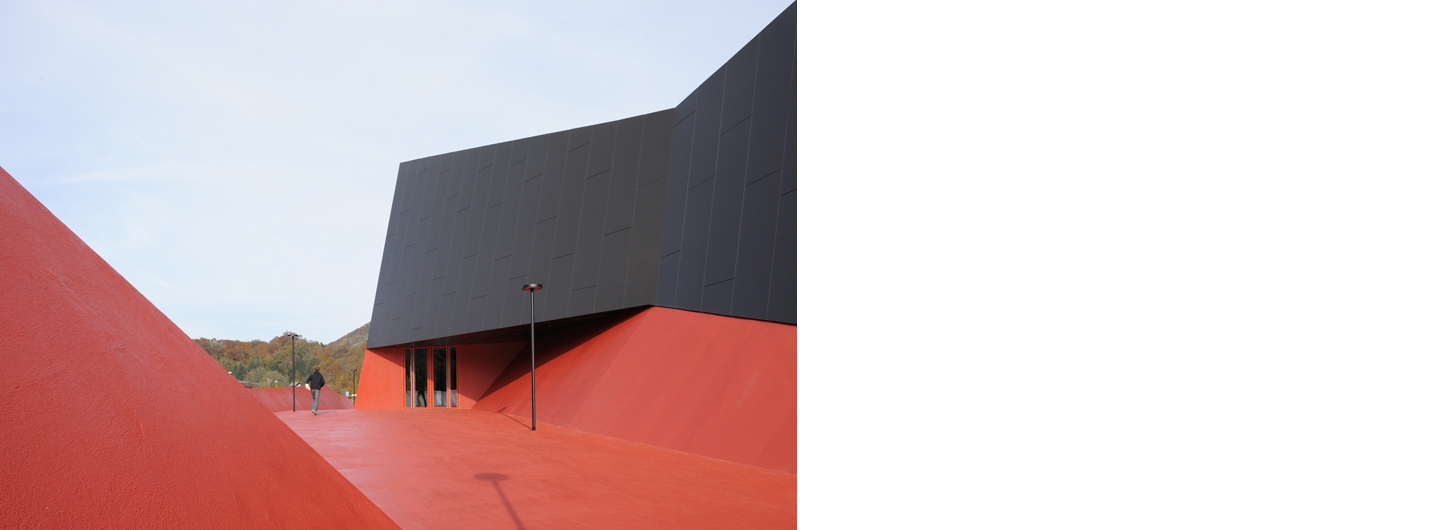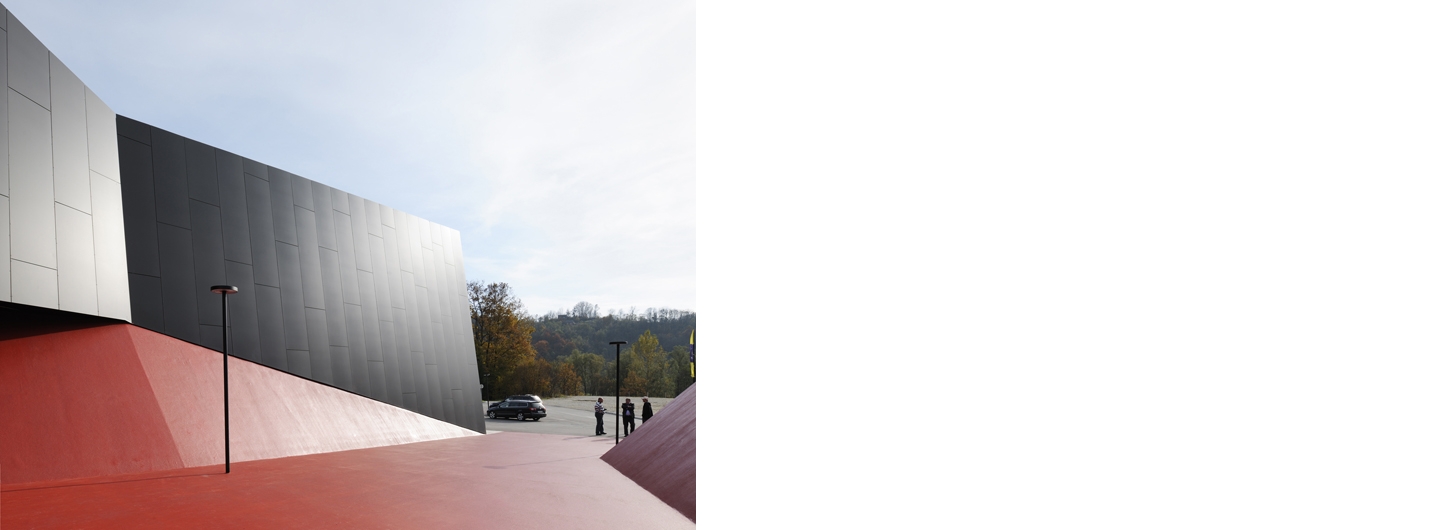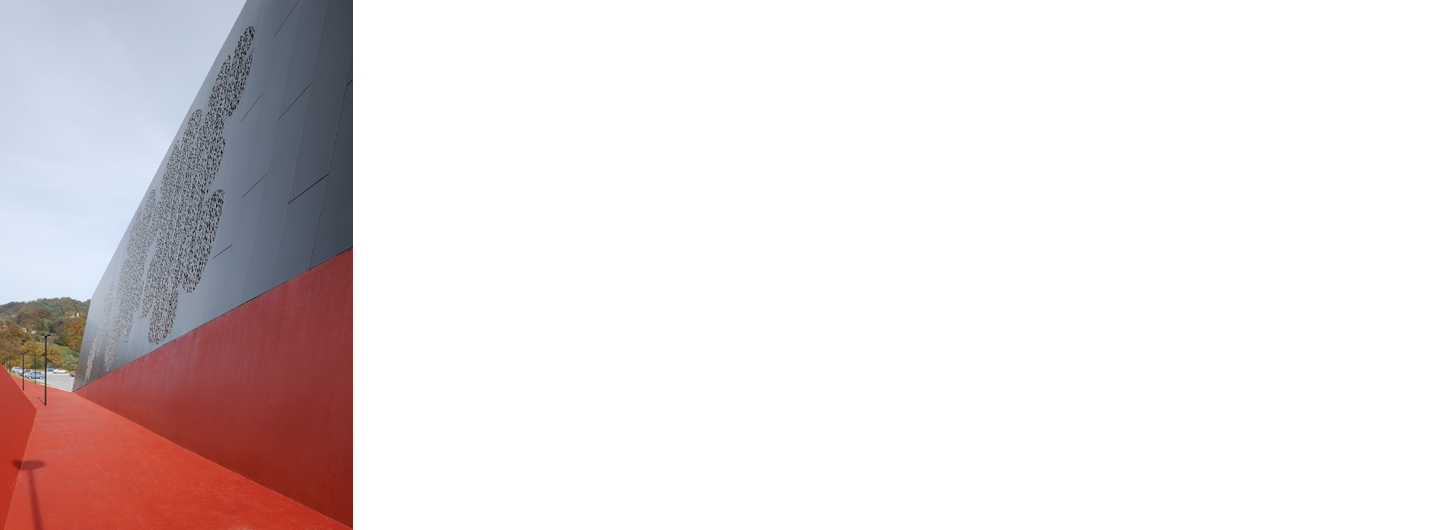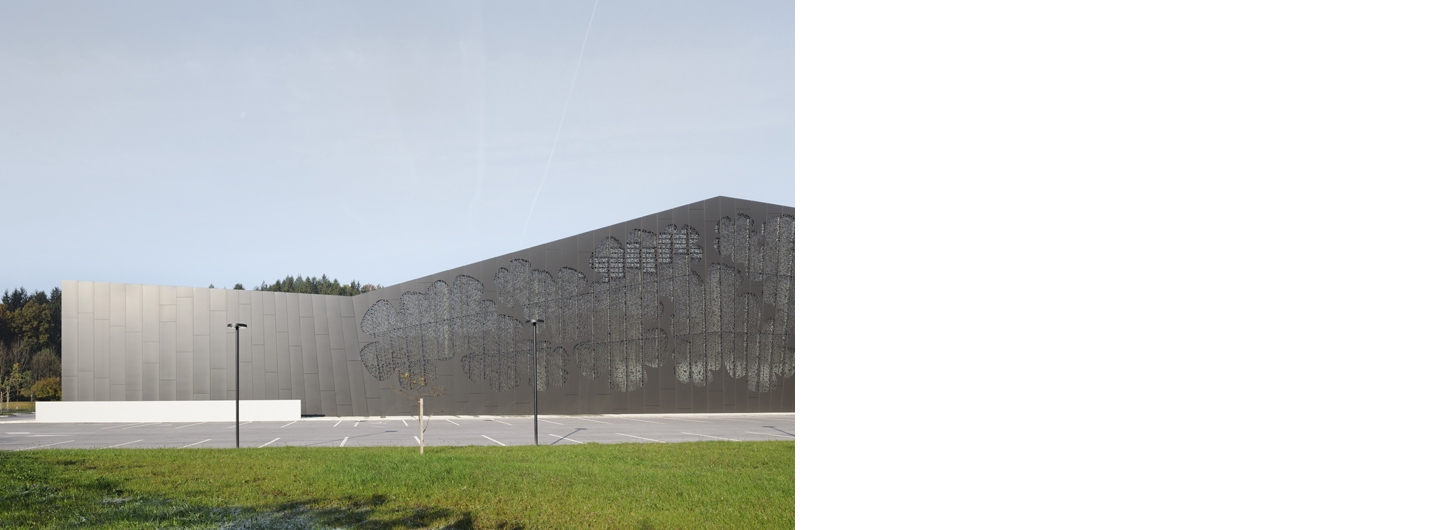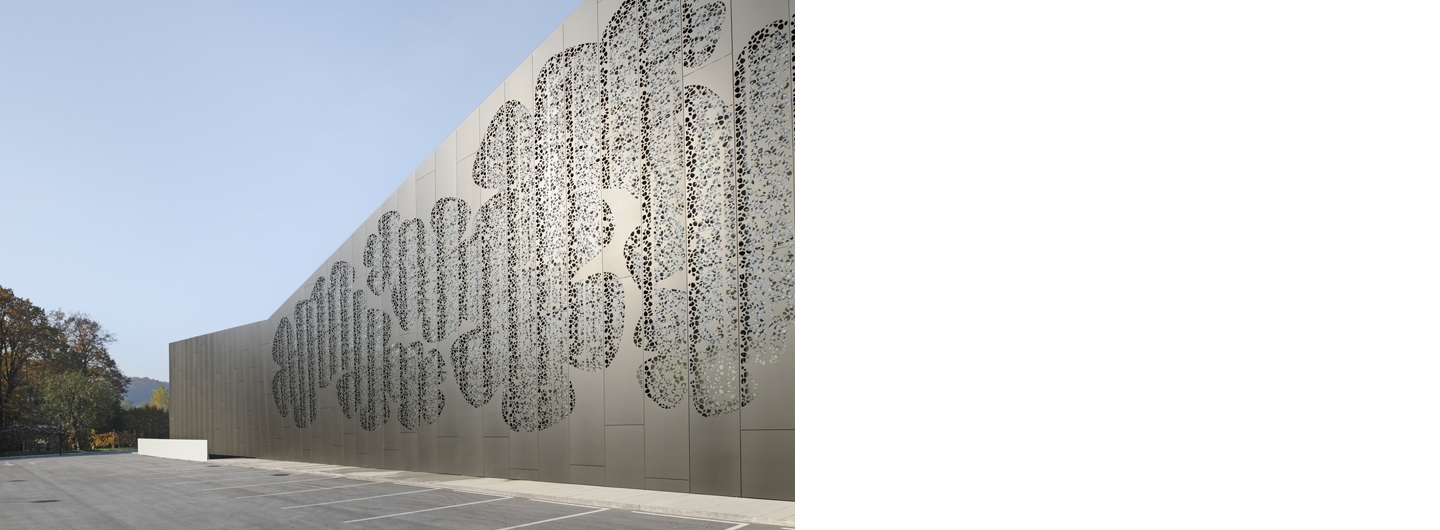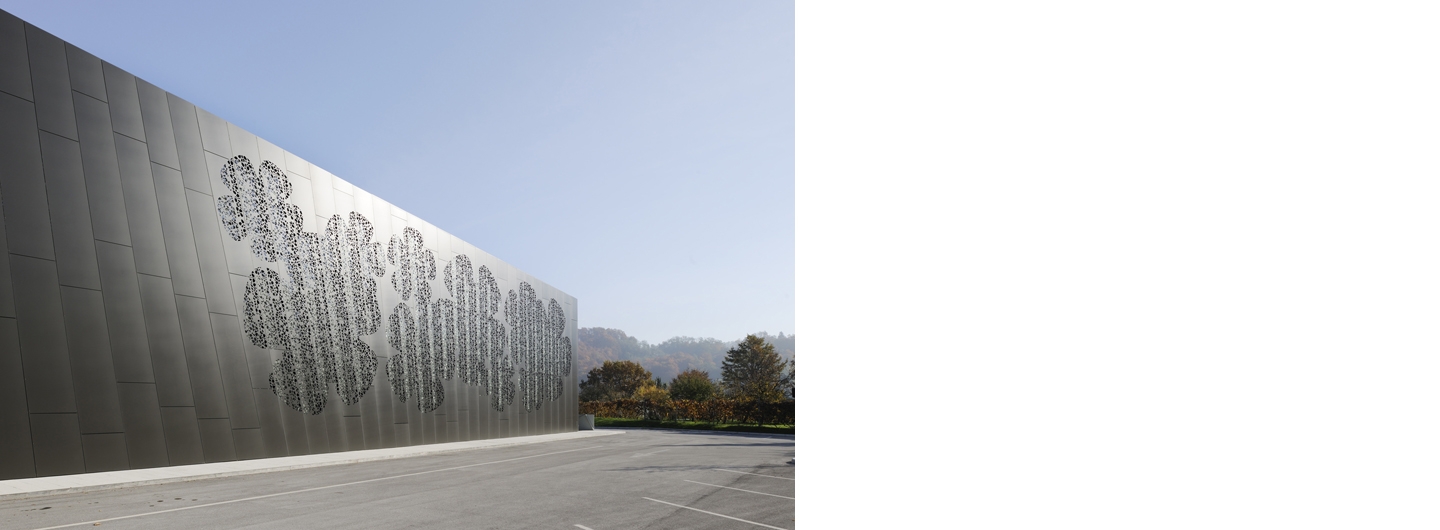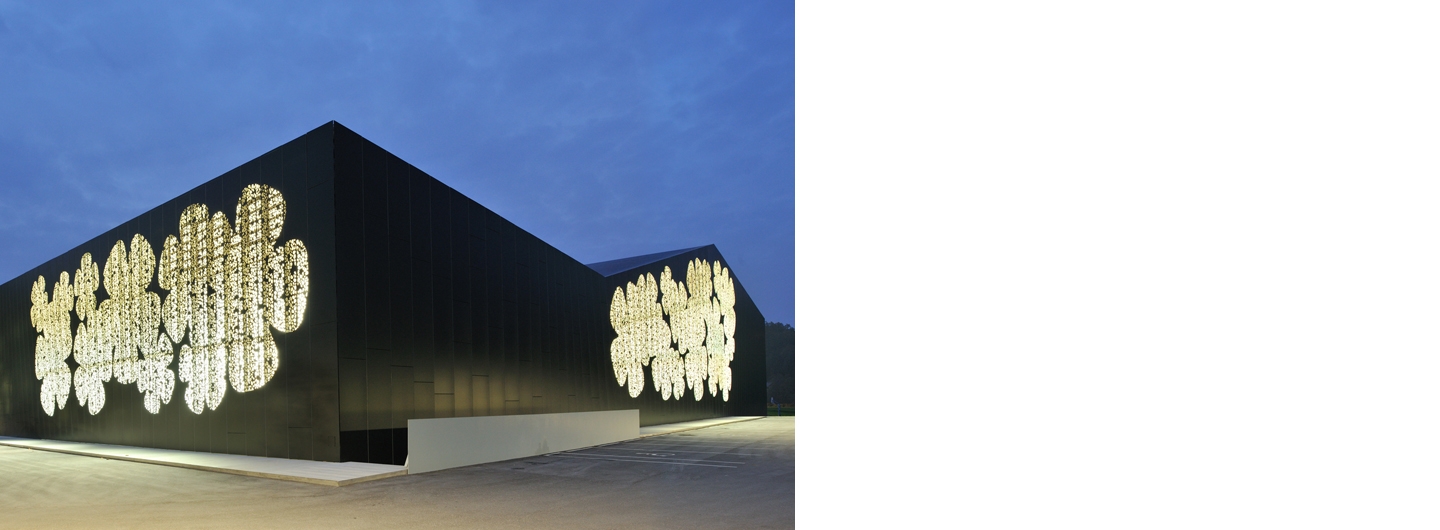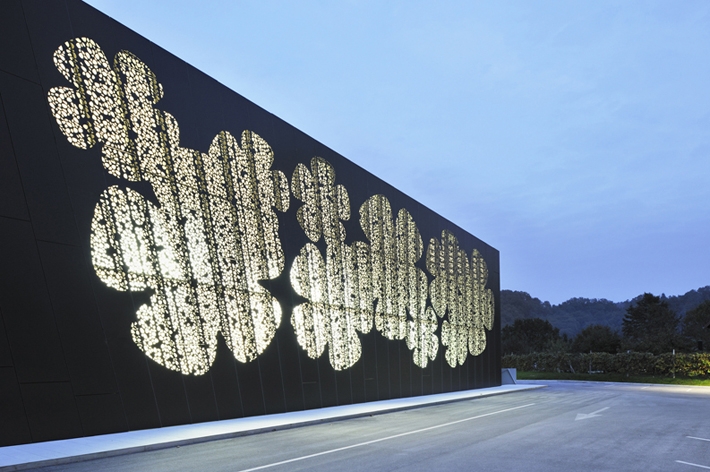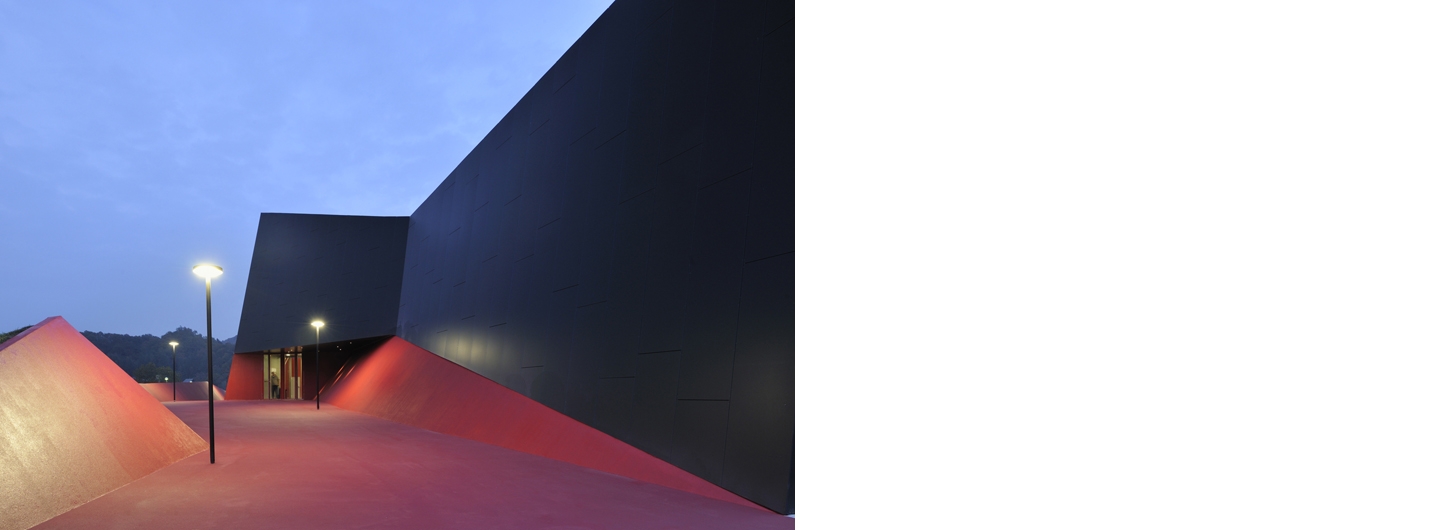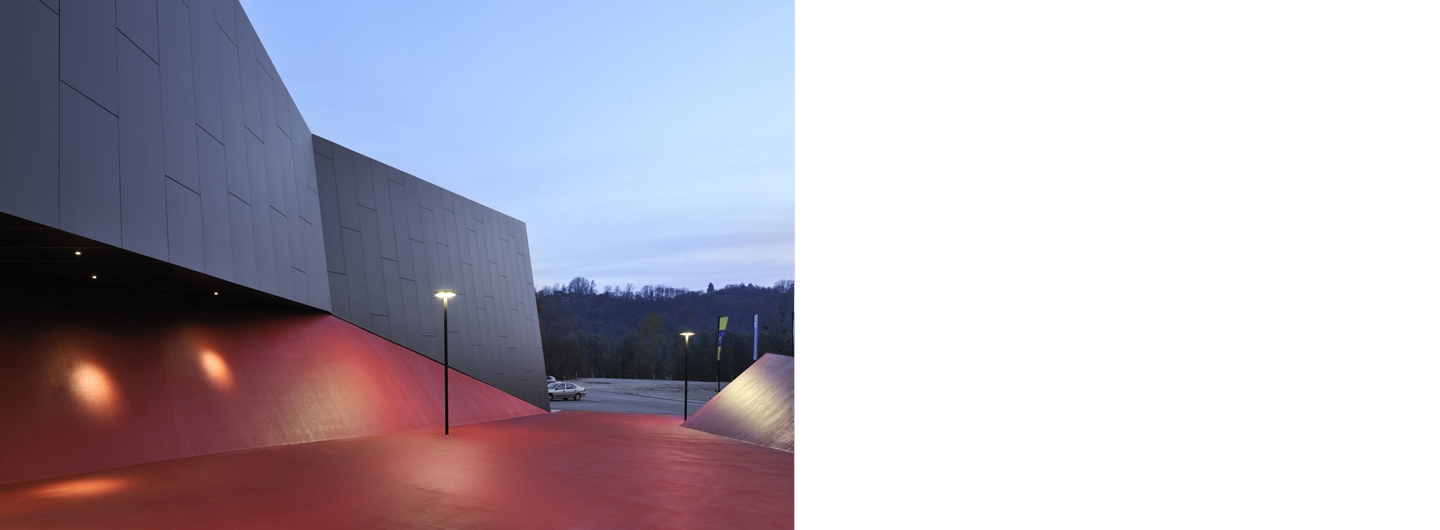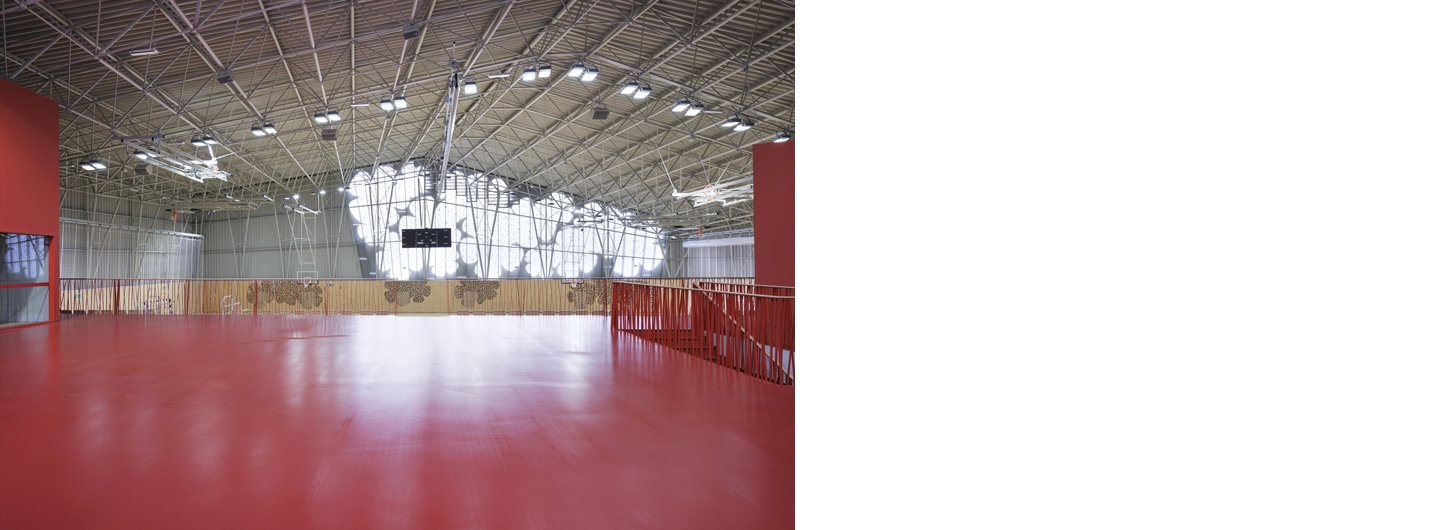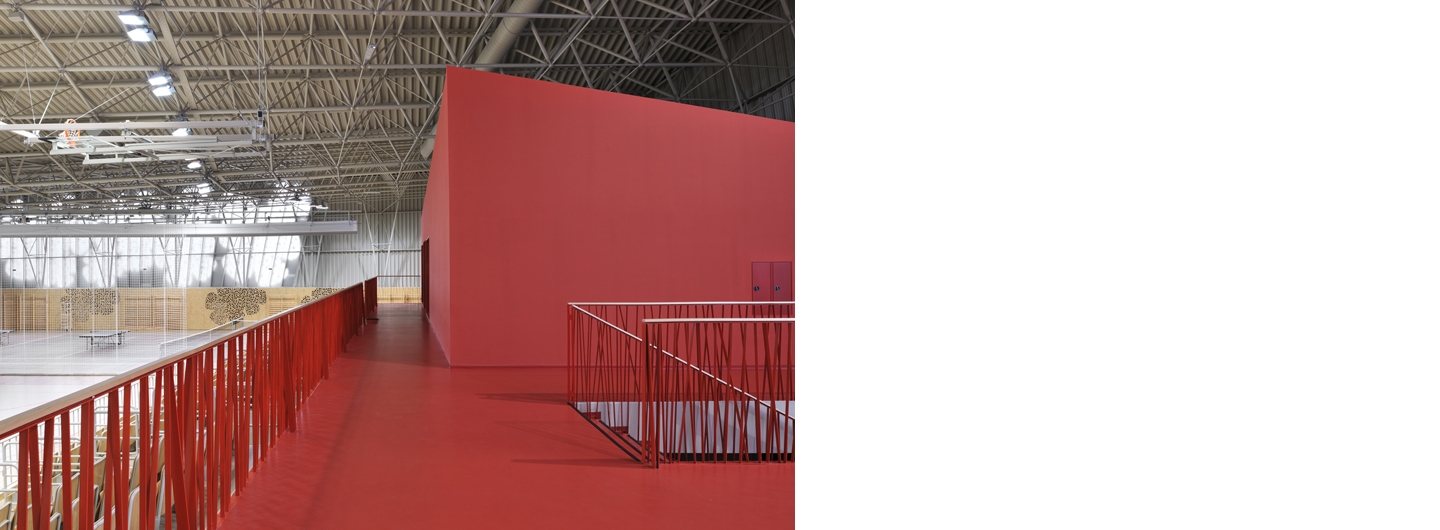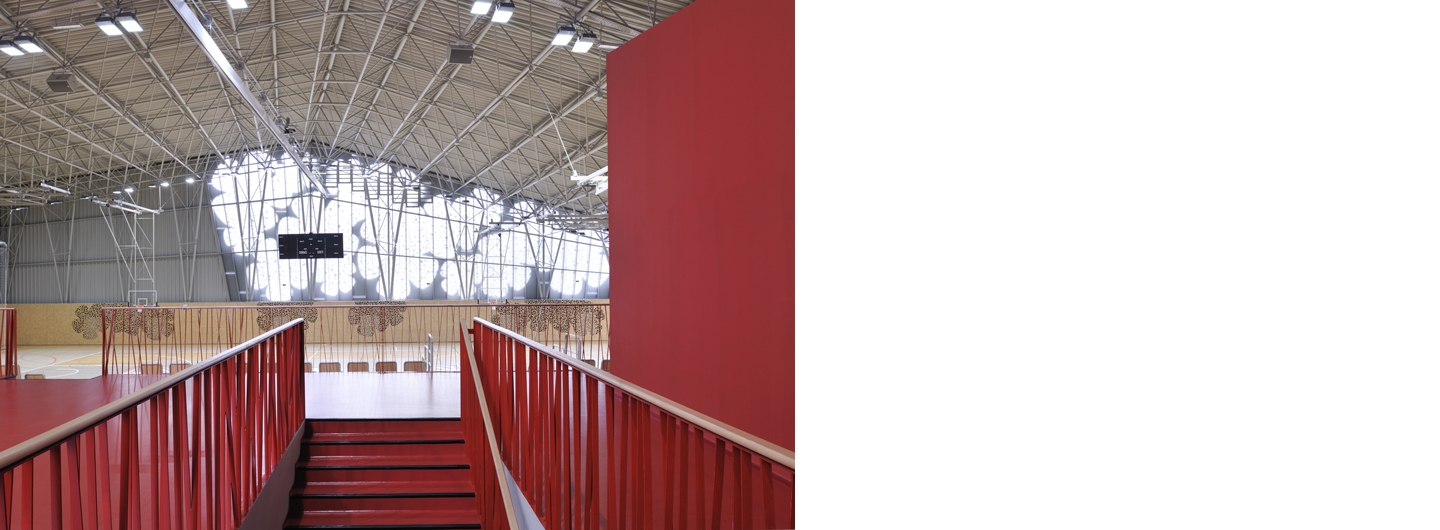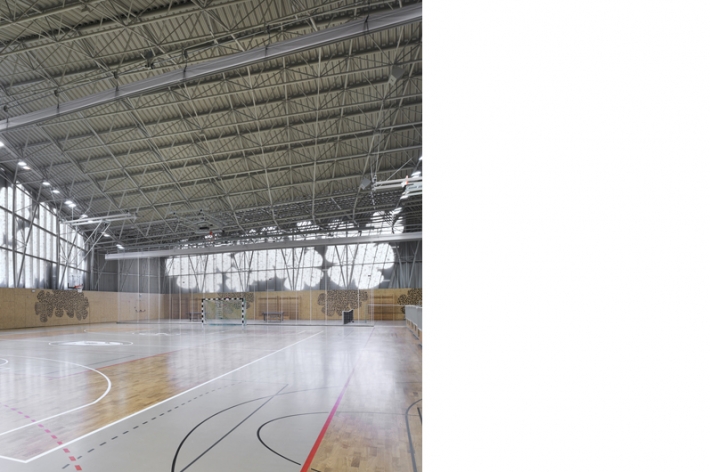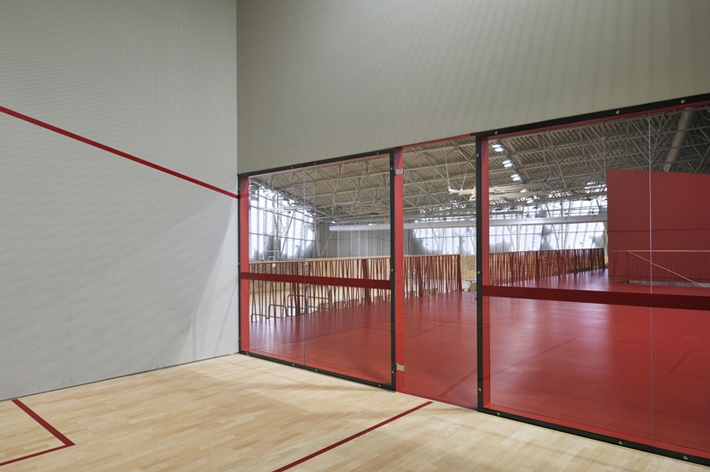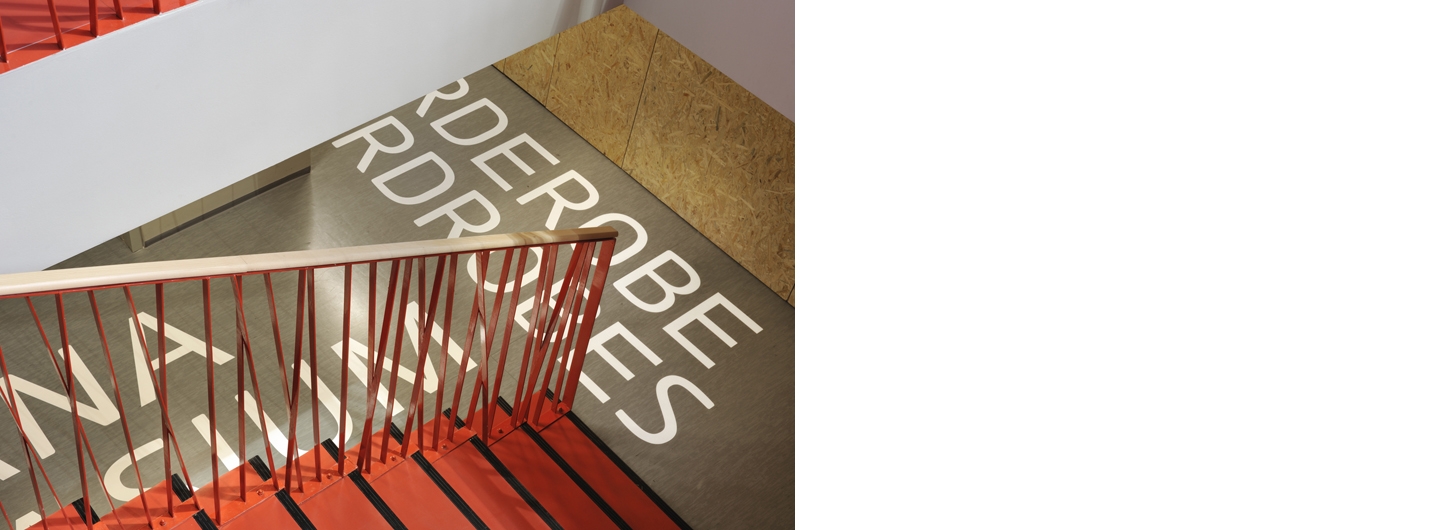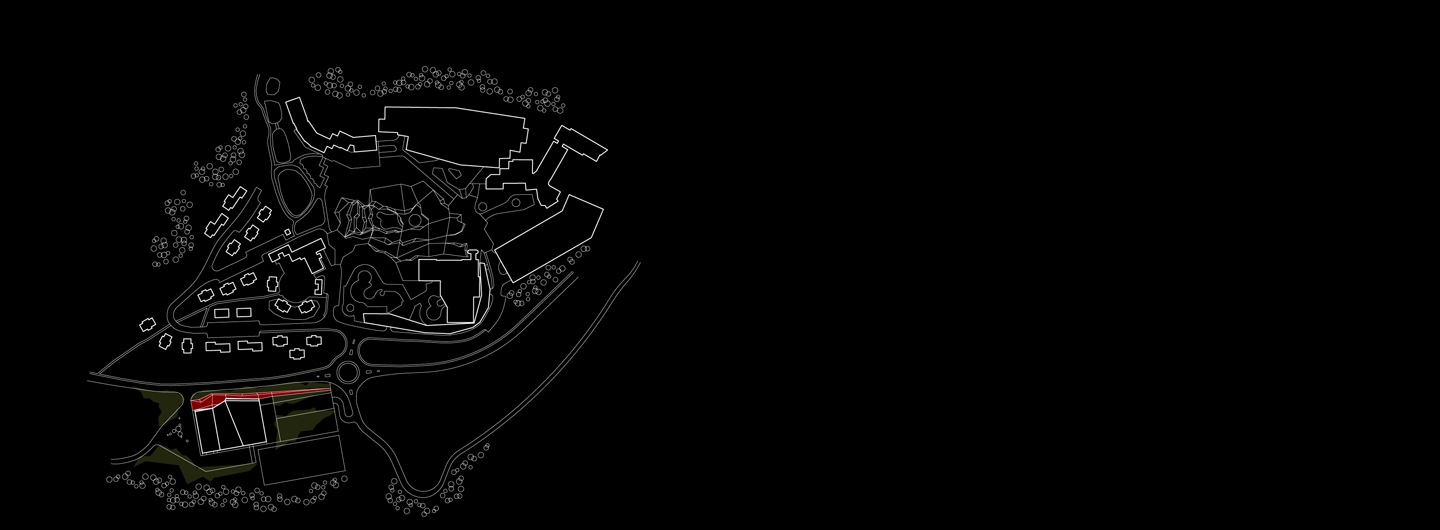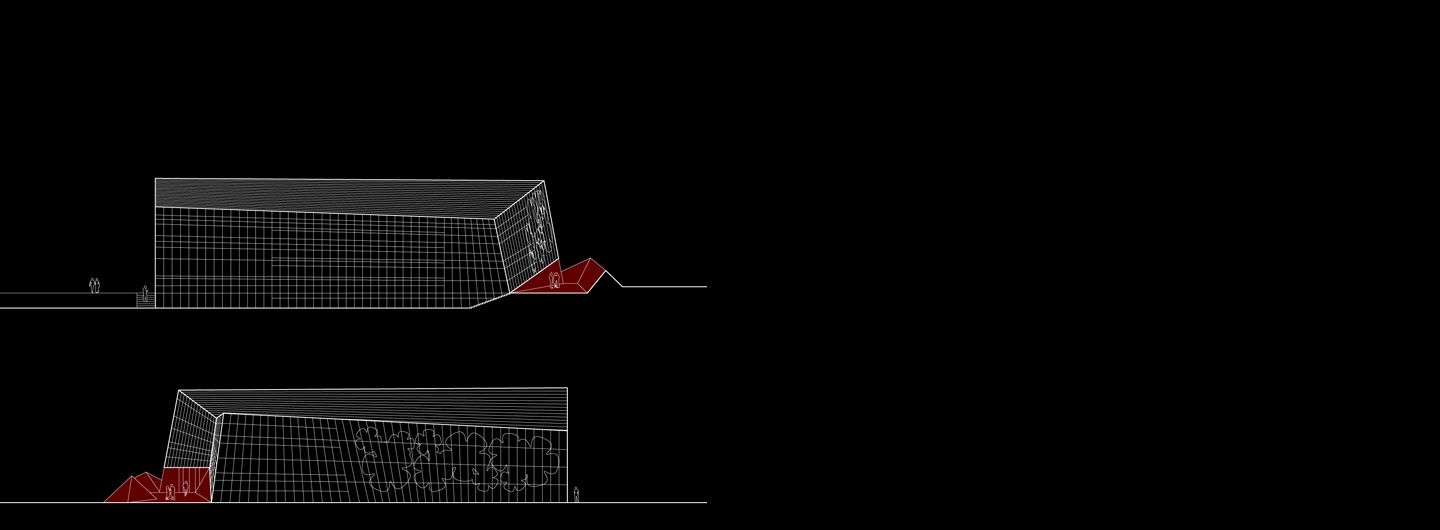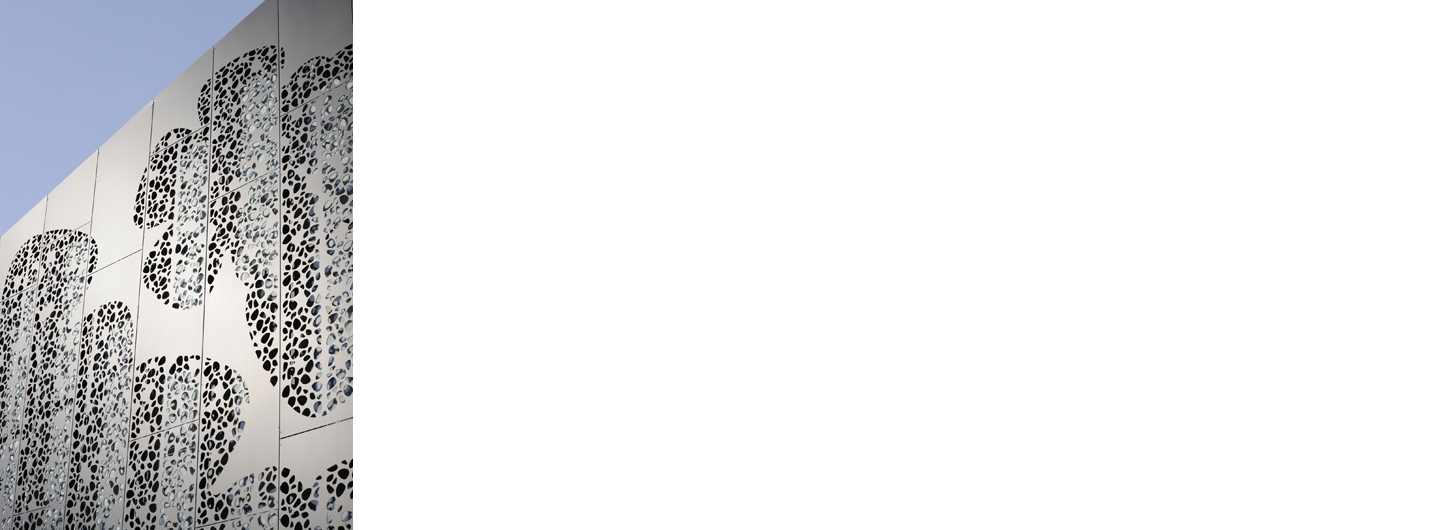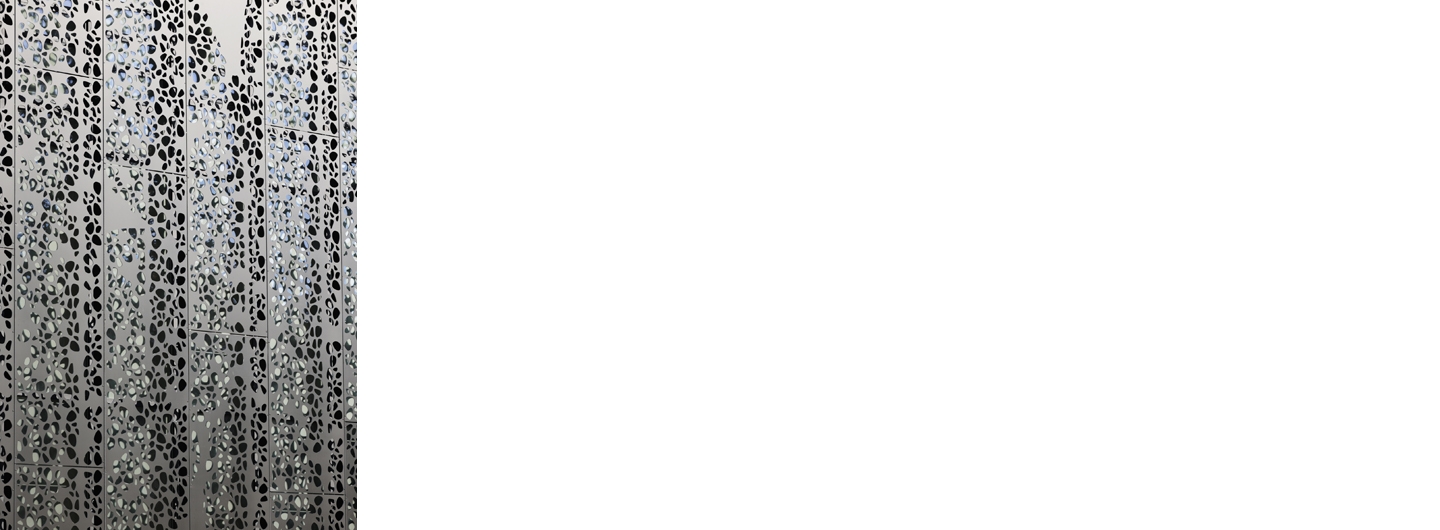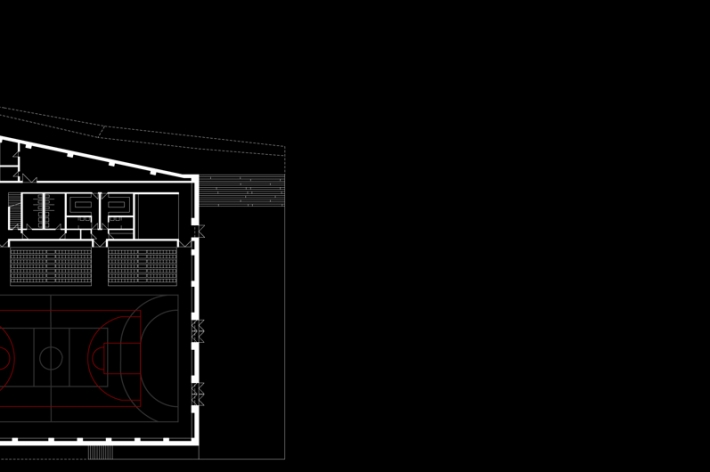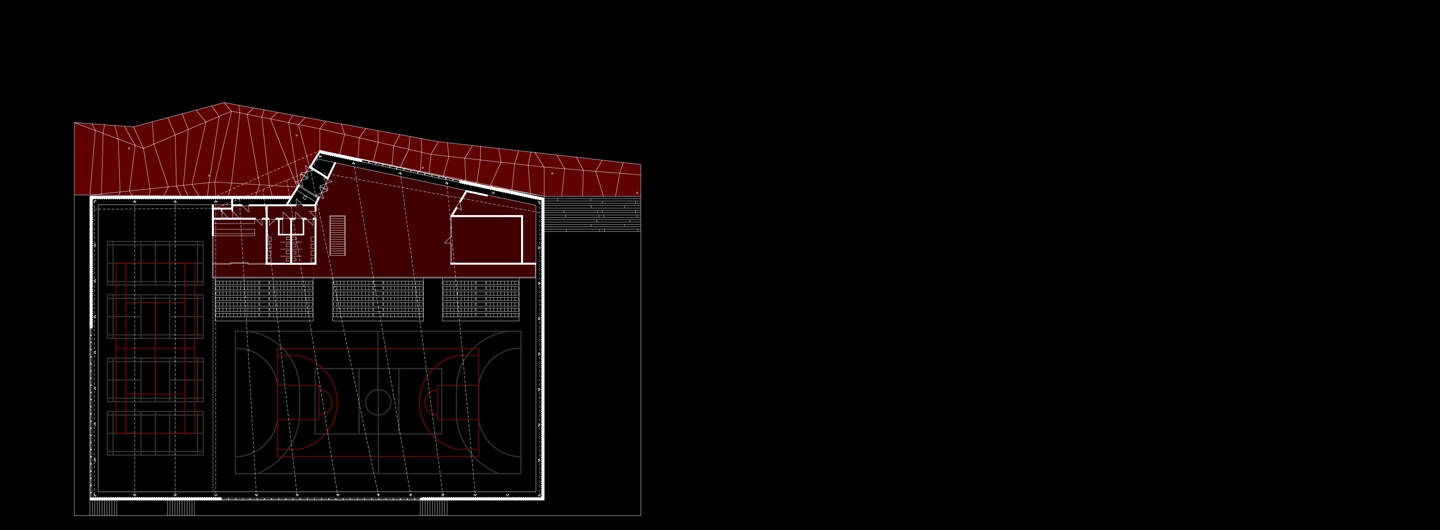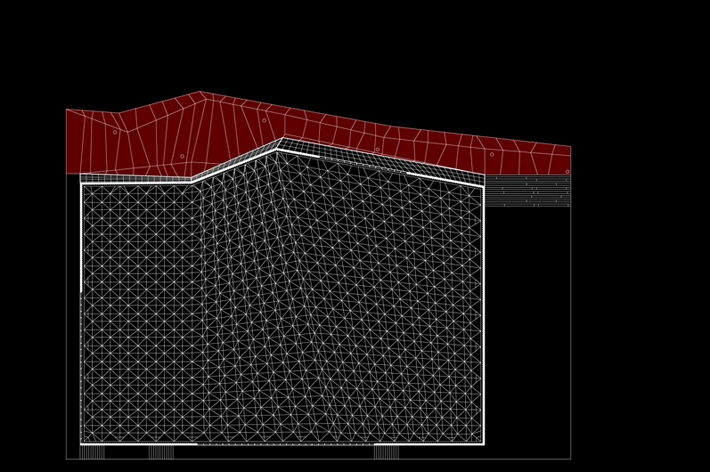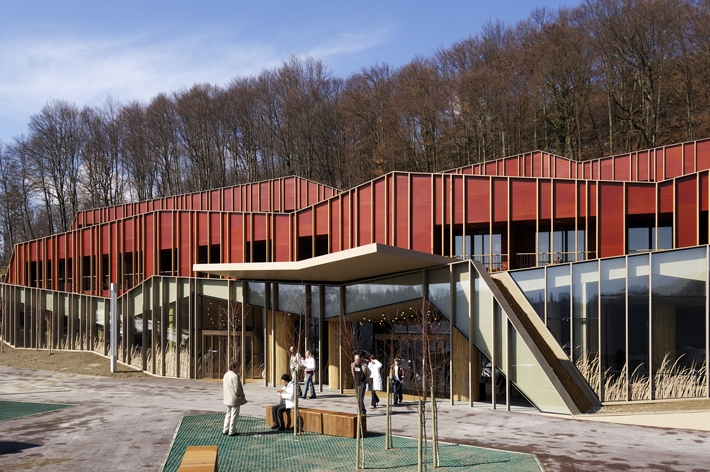Podčetrtek Sports Hall
Office / Author:
ENOTA
Team and collaborators:
architecture: ENOTA
project team: Dean Lah, Milan Tomac, Maruša Zupančič, Alja Černe, Polona Ruparčič, Tomi Maslovarić, Anna Kravcova, Zana Starovič, Nuša Završnik Šilec, Dean Jukić, Nebojša Vertovšek, Darja Zubac, Marko Volf, Andrej Oblak, Nina Kozin, Mojca Šavnik, Sabina Sakelšek, Esta Matković
structural engineering: Elea iC
mechanical services: Nom biro
electrical planning: Forte Inženiring
Location:
Podčetrtek, Slovenia
Year of project / completion:
2007 / 2010
Client:
Municipality of Podčetrtek
Area m2 (gross):
3.570,00
Cost:
3.600.000,00 €
Status (competition, project, completion) and phase:
completion
Tags:
Architecture / Public buildings / Sport
Photo:
Miran Kambič
The municipal sports hall is located next to the road leading into Podčetrtek, a town in the vicinity of Terme Olimia spa complex. The hall is directly adjacent to the road, placed behind the existing earth bank. The road is also where the main entrance is oriented towards; it is accessible by means of a connecting path between two car access points on both ends of the earth bank.
Due to its size, which considerably exceeds the outlines of traditional buildings, finding parallels with the vernacular architecture is impossible. Instead, it makes more sense to reference the larger structures of the spa complex, particularly Termalija, a building also located directly next to the main road. A dialogue of sorts is established between the two buildings: whereas Termalija gives an impression of emptiness, lightness and colour in an almost playful way, the municipal sports hall feels sterner: a full, heavy, and monolithic structure.
To an extent, the appearance of the hall is a response to the role it has in the town, being the only large indoor venue. Though it is designed primarily as a sports hall, it also plays the role of the main municipal hall for cultural events with larger audiences. It is precisely its double role that serves as the basis for the detailed design of the building. The main design cue is a "red carpet" that leads the visitors to the events taking place in the building. The access path that connects the two access points is cut into the existing earth bank. It takes advantage of the spatial anomaly and uses the bank as the means of protecting the entrance from direct interference of the road. Spatially designed and confined by the bank on one side, the path also incises into the building on the opposite side. Finished in vivid colours and attractive shapes, it widens before reaching the entrance and forms a quality space with almost square-like characteristics - an access platform that gradually envelops the visitors and directs them towards the main entrance into the hall.
In the evenings, the lighting ornament on the facade emphasises the solemn character of the access route. As it grows darker, the perforated cladding over the window apertures, which prevents unwanted interference of sunlight on the courts during the day, lights up in a recognisable floral pattern at night. The activity inside is thus directly mirrored on the facade and contributes to the promotion of the events and attractiveness of the building.
